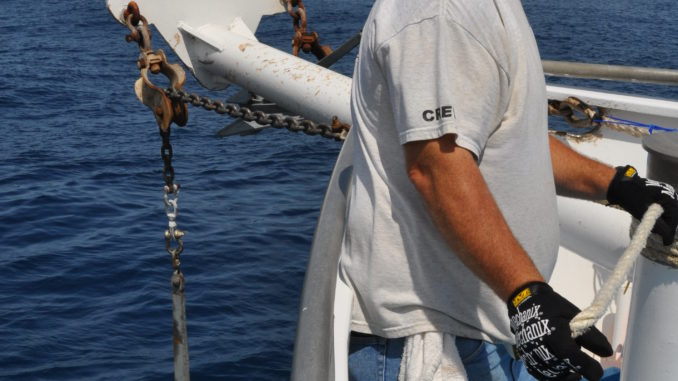
Anchoring is one of the most important tasks for a successful day of bottom-fishing, because a boat that isn’t properly anchored doesn’t allow fishermen to get their baits to the fish.
The captain estimates an anchor course by first finding the structure that is likely to hold fish with his depth finder. Then he takes into consideration the current, wind direction and velocity, bottom type, and water depth to decide where the boat will come to rest after the anchor lines comes tight. Sometimes the wind wins, other times the current wins, but both factors determine where the boat will come to rest in relation to the anchors.
An anchor may drag across a hard bottom or grab immediately in a sandy bottom. In rough conditions, it takes more line for the anchor to hold securely than in calm conditions.
Often, two anchors are used to keep the boat from swinging back and forth.
Anchoring is often a complex problem as common to small boats as it is for large party boats. The only way to learn how to establish an anchor course is through many trial-and-error experiences.




Be the first to comment